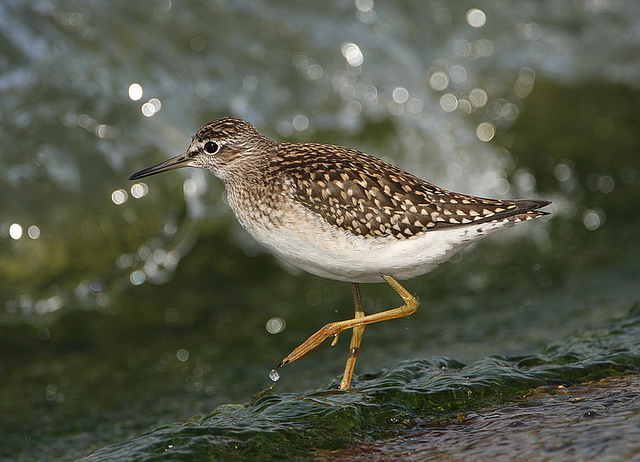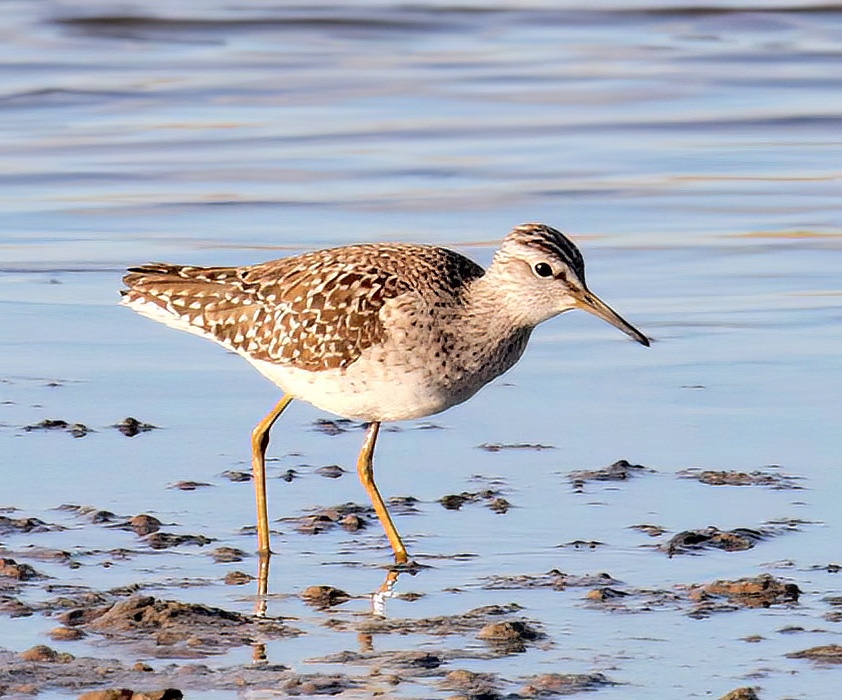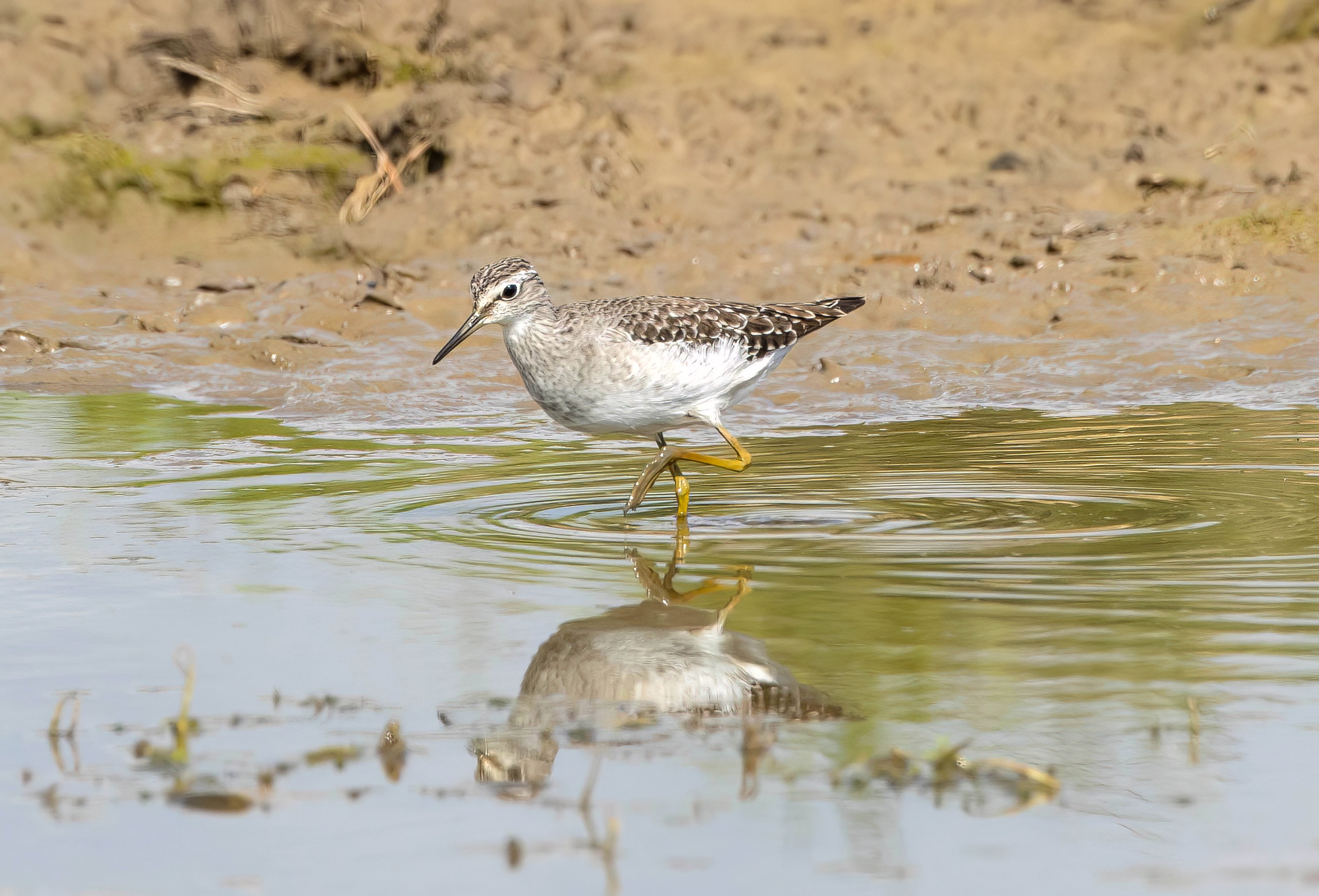Wood Sandpiper Tringa glareola
Scarce passage migrant in spring and autumn, with occasional large influxes in autumn.



Wood Sandpipers: left, Covenham Reservoir May 12th 2009 (Dean Eades); centre, Alkborough Flats May 12th 2010 (Simon Spavin);
right, Frampton Marsh September 2nd 2017 (Mark Johnson).
Wood Sandpiper numbers on migration varies from year to year. Birds turn up from April , though May is usually the peak spring month. LBR reports show that in the five years to 2020 peak May counts ranged from a low of 1-2 in 2017 to a high of seven in 2019, peak count averaging about eight birds; indicative of their variability note that there were 20 in 2016. Autumn migration usually peaks in July-August and ranged from a low of four in 2017 to a high of 41 in 2019 with an average autumn monthly peak of around 12. The autumn of 2019 was exceptional with a peak count of 172 birds in July. The Atlas suggested that in the 20 years to the late 1990s numbers had averaged 25 per year, so recent years have certainly seen an increase. Of the 10 top sites in 2019, five new wetlands did not exist 25 years ago when the Atlas was being written. These sites (numbers in brackets are the 2019 peak autumn count): Freiston Shore (41), Middlemarsh Farm, Skegness (19), Manby Wetlands (18), Frampton Marsh (16), and Alkborough Flats (2), are all excellent for waders and seem to be favoured by Wood Sandpipers.
(Account as per new Birds of Lincolnshire (2021), included September 2022)
